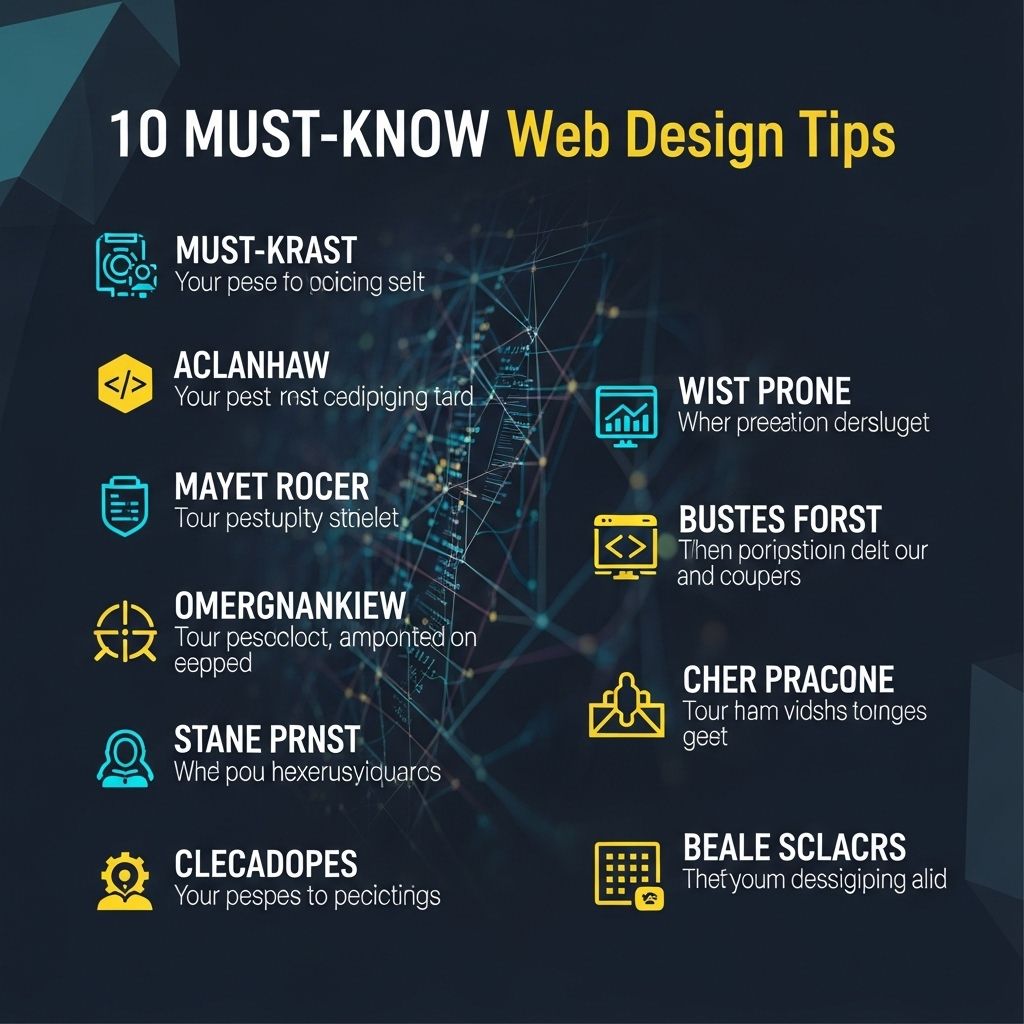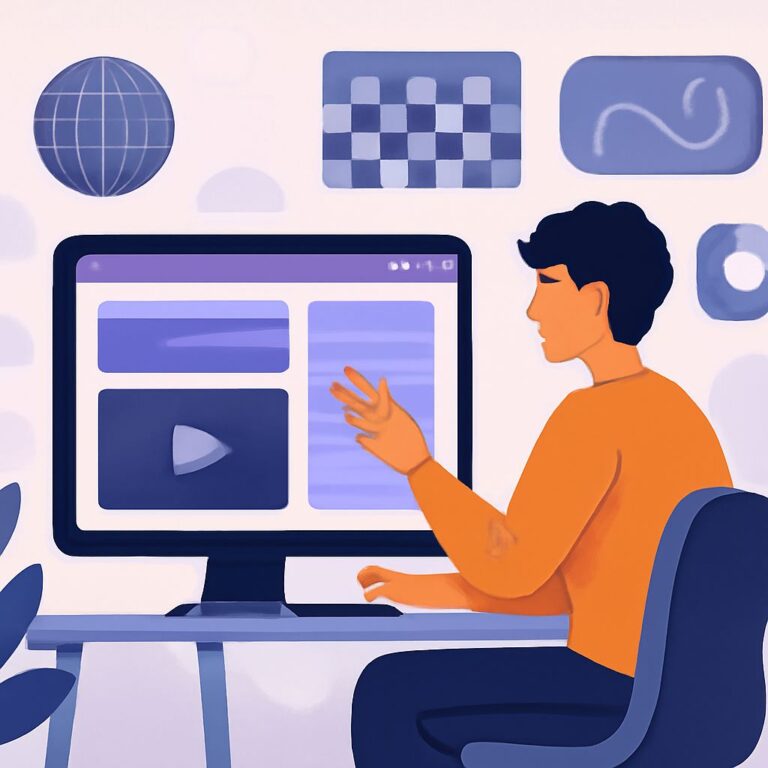The world of web design is constantly evolving, with new trends and technologies emerging every year. For both novice and experienced designers, keeping up with best practices is crucial for creating websites that are not only visually appealing but also functional and user-friendly. This article delves into essential web design tips that can help you enhance the usability and aesthetics of your websites.
Table of Contents
Understanding Your Audience
One of the cornerstones of effective web design is a deep understanding of your target audience. Knowing who will be using your website informs design choices, content creation, and user experience strategies. Here are some ways to better understand your audience:
- Conduct Surveys: Use online tools to gather feedback about what users want.
- Analyze User Behavior: Utilize analytics tools to track how users navigate your site.
- Create User Personas: Develop profiles representing your ideal users to guide design choices.
Responsive Design is Key
With an increasing number of users accessing the web via mobile devices, a responsive web design approach has become essential. This means your website should adapt seamlessly to various screen sizes. Here are some tips to ensure your design is responsive:
- Use flexible grids that adjust to screen size.
- Utilize media queries to apply different styles for different devices.
- Test your design on multiple devices and orientations.
Prioritize User Experience (UX)
User experience encompasses every aspect of the user’s interaction with your website. A site that provides an intuitive experience encourages users to stay longer and engage more. Consider implementing the following:
Clear Navigation
Navigation should be simple and intuitive. Users should not have to think about how to find information. Key points include:
- Limit menu items to a maximum of seven.
- Use descriptive labels for navigation links.
- Implement a search bar for larger sites.
Fast Loading Times
Users expect fast-loading pages. A delay of even a few seconds can lead to significant drop-offs. Improve loading times by:
- Optimizing images to reduce size without sacrificing quality.
- Minimizing HTTP requests by combining files where possible.
- Using a Content Delivery Network (CDN) to distribute content globally.
Color Theory in Web Design
Color plays a pivotal role in web design, influencing user emotions and behaviors. Understanding color theory can help in choosing the right palette for your website. Here are some principles to consider:
Color Harmony
Select colors that complement each other. You can achieve harmony through:
- Analogous Colors: Colors next to each other on the color wheel.
- Complementary Colors: Colors opposite each other on the wheel.
- Monochromatic Schemes: Different shades and tints of a single color.
Contrast and Readability
Ensure that text is easily readable against the background. Use high contrast between text and background colors to enhance visibility. This can be critical for accessibility.
Typography Matters
The typography you select can significantly affect user perception and readability. Follow these typography guidelines:
- Stick to a maximum of three different fonts on your website to maintain coherence.
- Choose legible fonts; sans-serif fonts tend to be easier to read on screens.
- Utilize larger font sizes for headlines to create a clear hierarchy.
Incorporate Visual Elements
Visual elements like images, videos, and graphics can enhance the storytelling aspect of your website. Here are some best practices:
| Element Type | Best Practices |
|---|---|
| Images | Use high-quality images, but optimize them for faster loading. |
| Videos | Ensure they are relevant and add value to the content. |
| Icons | Utilize icons to simplify complex information and create visual interest. |
SEO and Web Design
Search Engine Optimization (SEO) should not be an afterthought. Integrating SEO best practices into your web design can significantly boost visibility. Key aspects to focus on include:
- Ensure all images have descriptive alt text.
- Utilize proper heading structures (H1, H2, etc.) for content hierarchy.
- Optimize meta tags for better on-page SEO.
Testing and Iteration
After your website goes live, the work is not done. Continuous testing and iteration are essential for long-term success. Here’s how to approach this:
A/B Testing
Conduct A/B tests on different design elements to see what resonates best with your audience. This can help you optimize elements such as:
- Call-to-action buttons
- Landing pages
- Color schemes
User Feedback
Regularly seek user feedback through surveys or usability tests to identify areas for improvement. This will help you make informed changes to your design.
Conclusion
In the rapidly changing landscape of web design, keeping up with best practices is essential for creating engaging and effective websites. By focusing on understanding your audience, prioritizing user experience, incorporating aesthetically pleasing elements, and committing to continuous improvement, you set yourself up for success in the digital realm. Implement these tips to elevate your web design projects and deliver exceptional experiences to your users.
FAQ
What are the essential elements of good web design?
Good web design includes a user-friendly layout, responsive design, effective use of color and typography, fast loading times, and clear navigation.
How important is mobile responsiveness in web design?
Mobile responsiveness is crucial as a significant portion of web traffic comes from mobile devices; a responsive design ensures your site looks and functions well on all screen sizes.
What role does color play in web design?
Color influences user emotions and behaviors; choosing the right color scheme can enhance brand identity and user experience.
Why is website loading speed important?
Website loading speed affects user experience and SEO rankings; faster sites tend to have lower bounce rates and higher conversion rates.
What is the significance of website navigation?
Clear and intuitive navigation helps users find information quickly, improving their overall experience and encouraging them to stay longer on your site.
How can I improve the accessibility of my website?
Improving accessibility involves using alt text for images, ensuring keyboard navigation, and following web content accessibility guidelines (WCAG) to accommodate all users.









